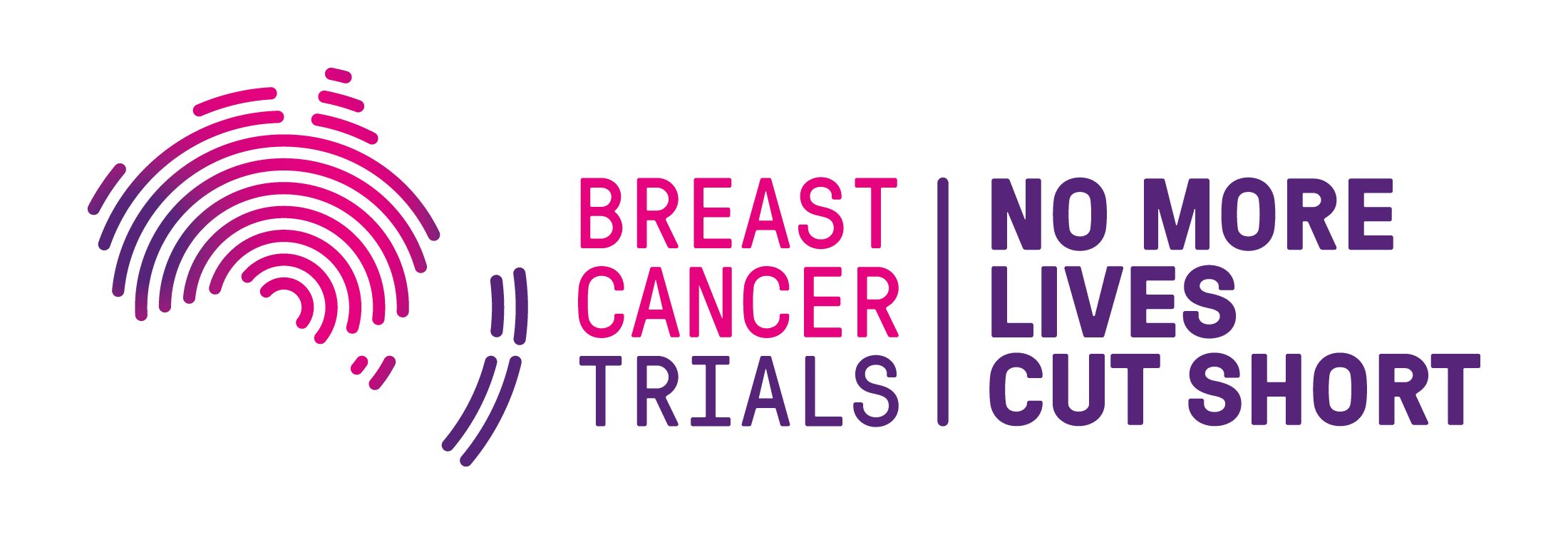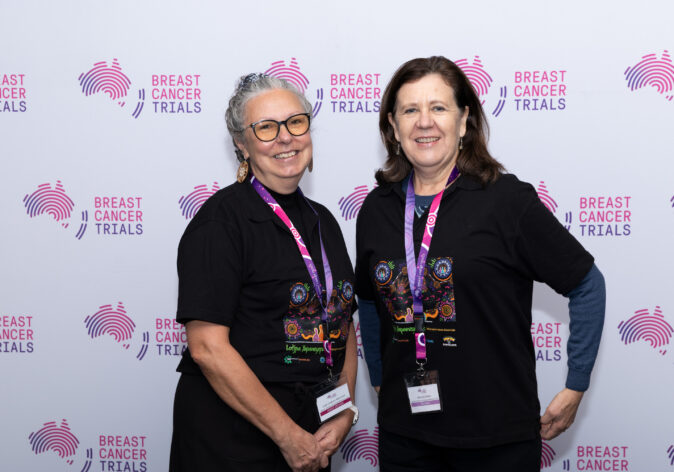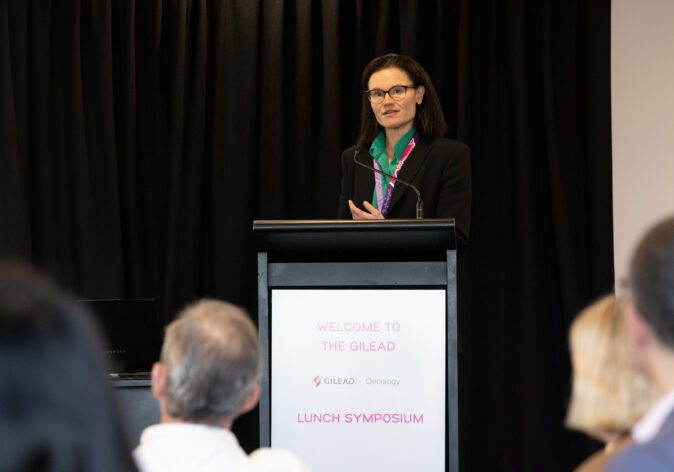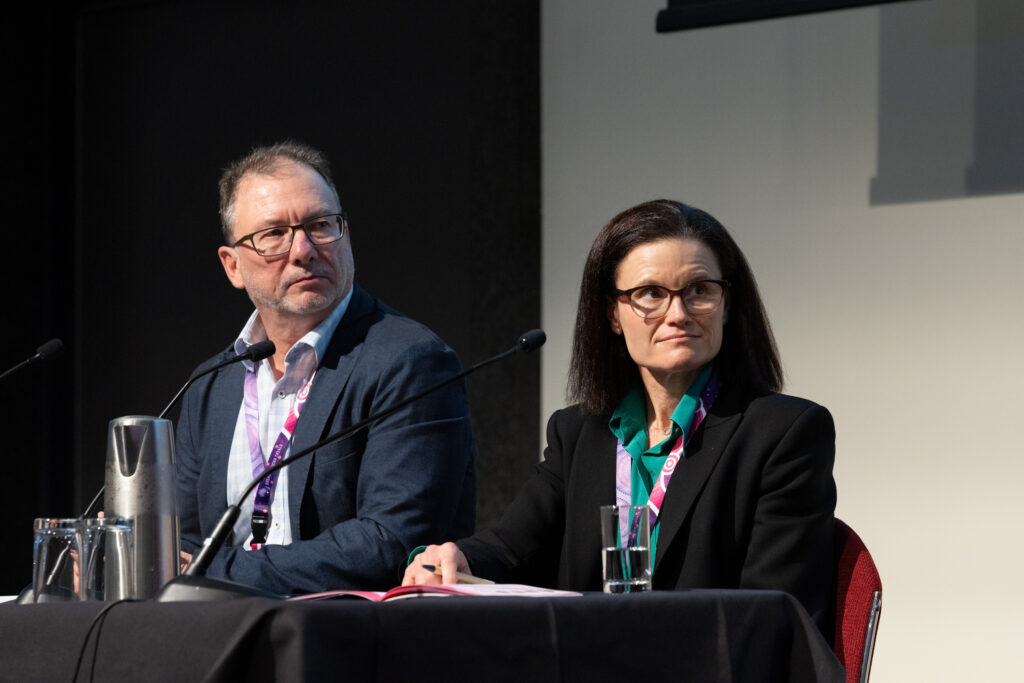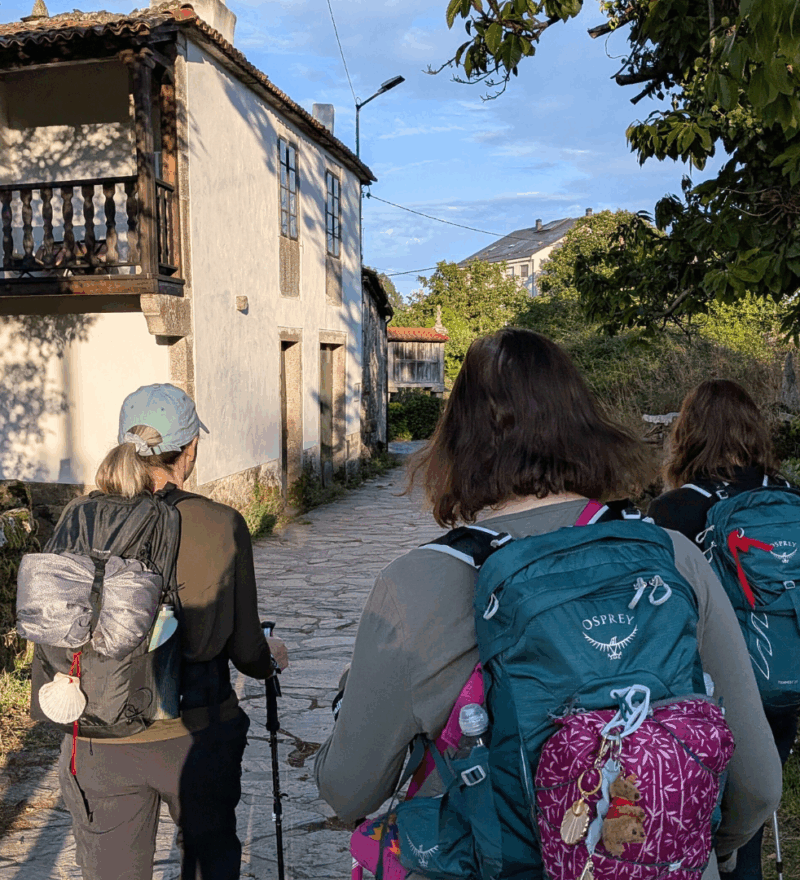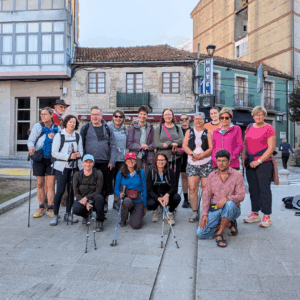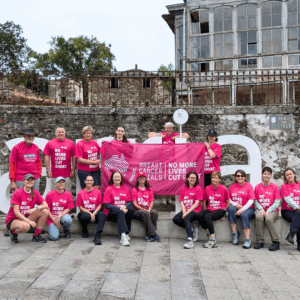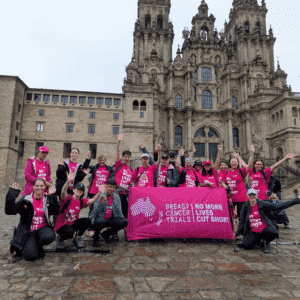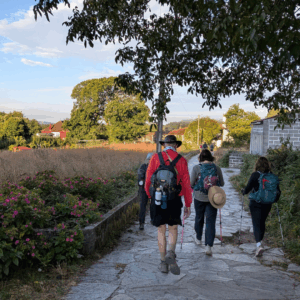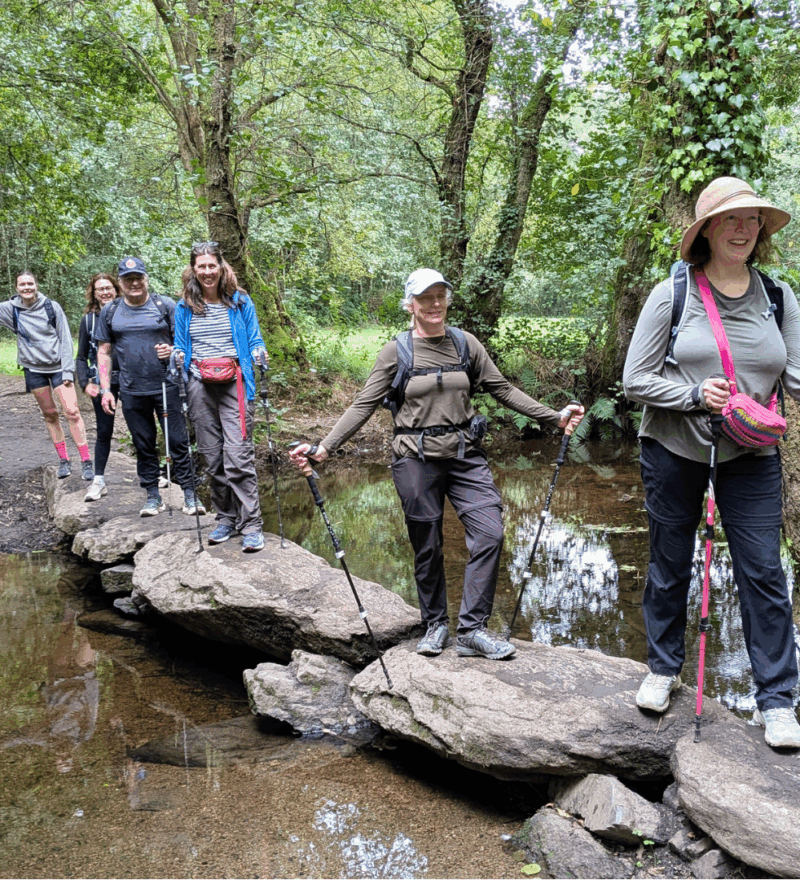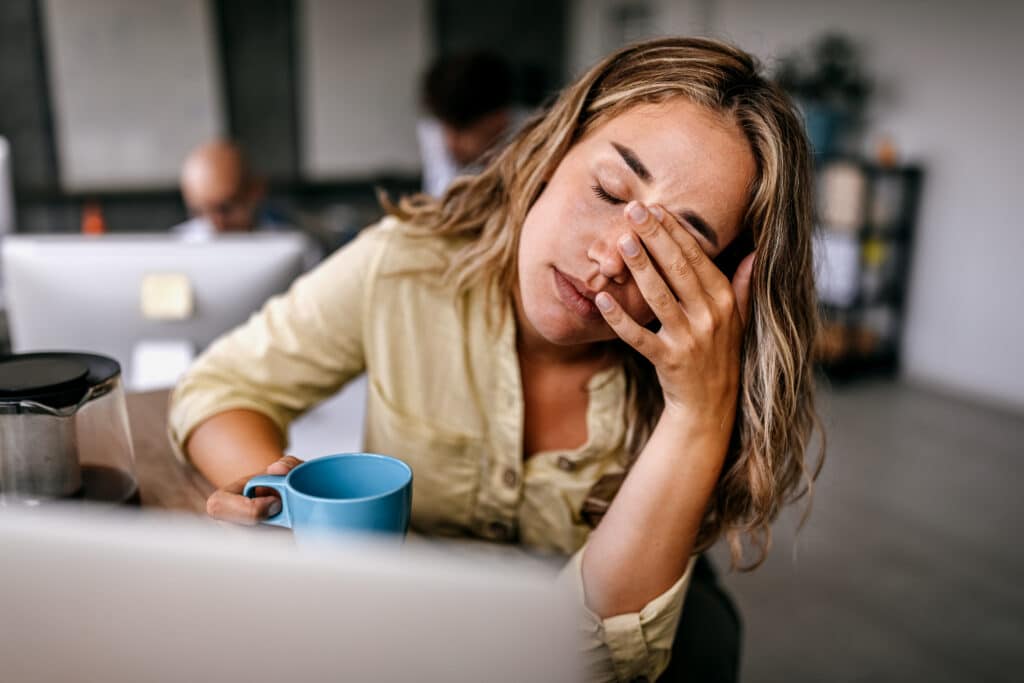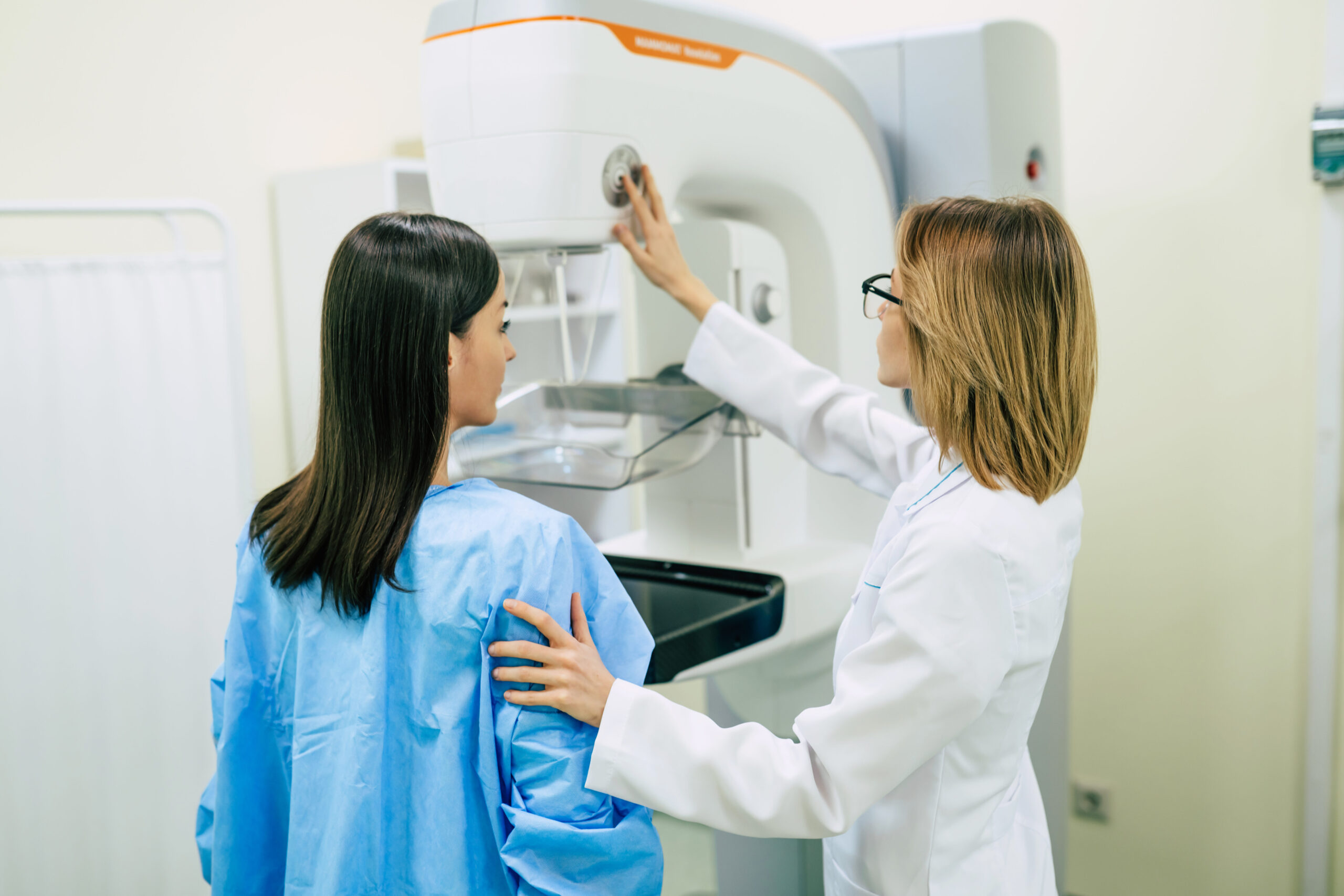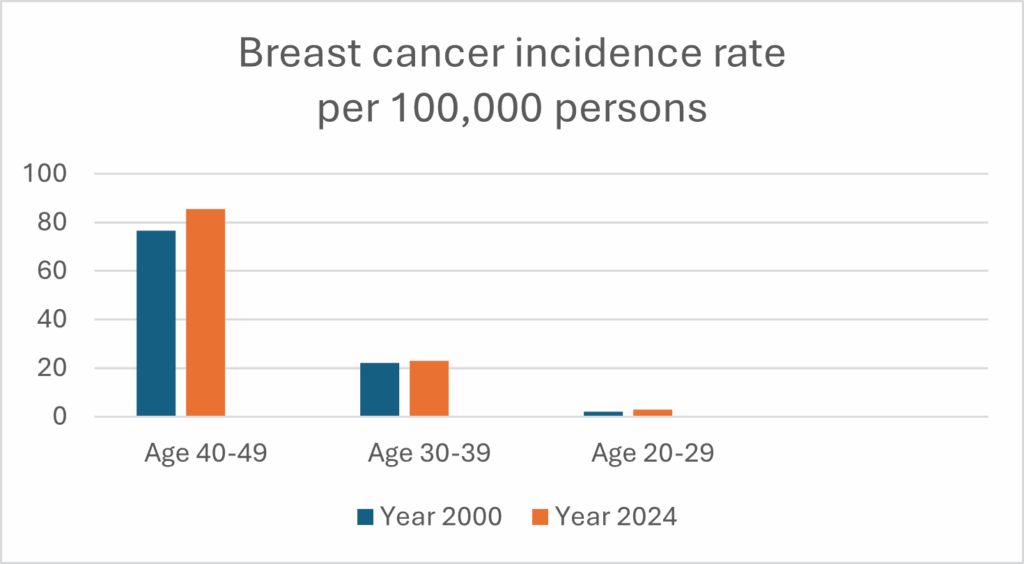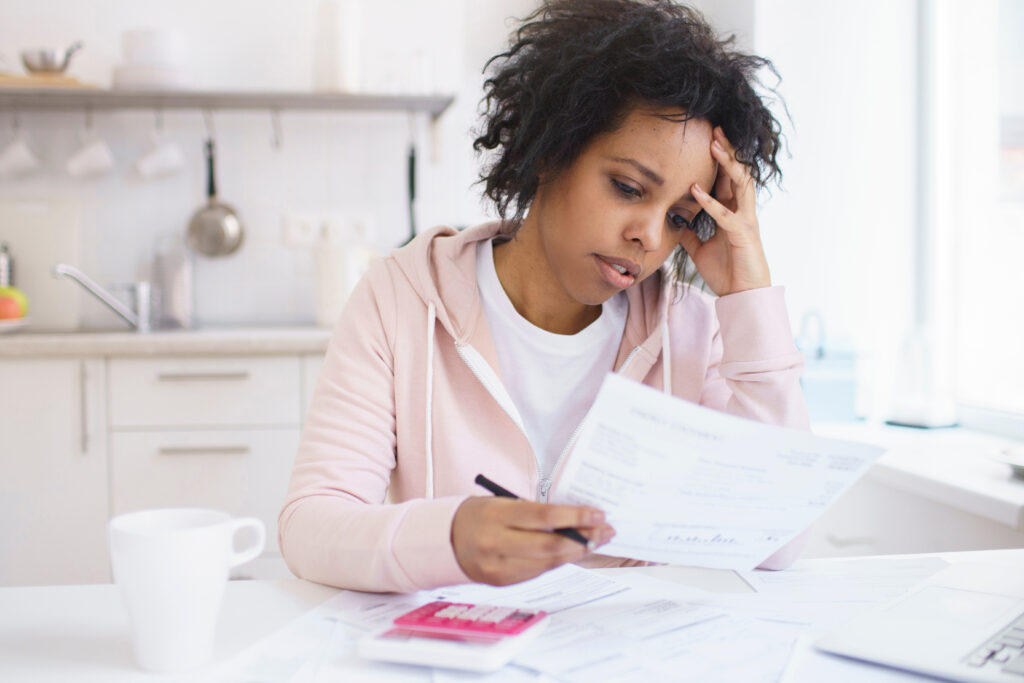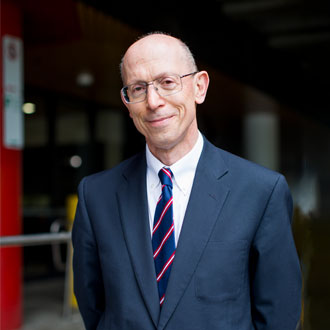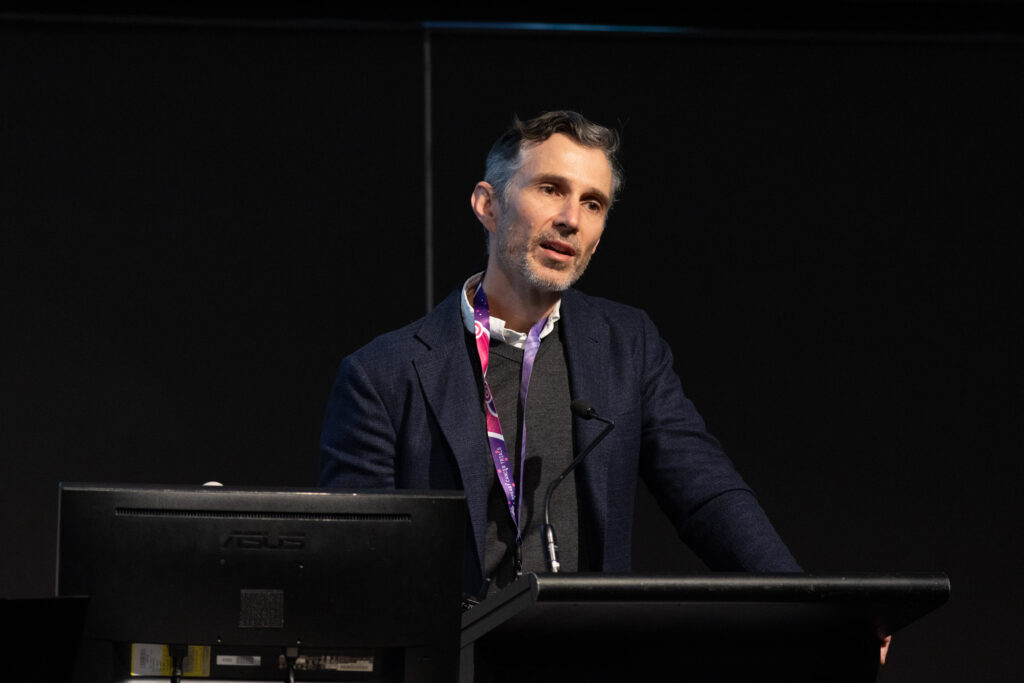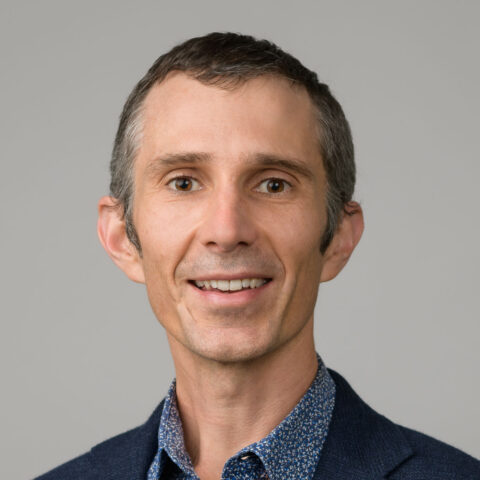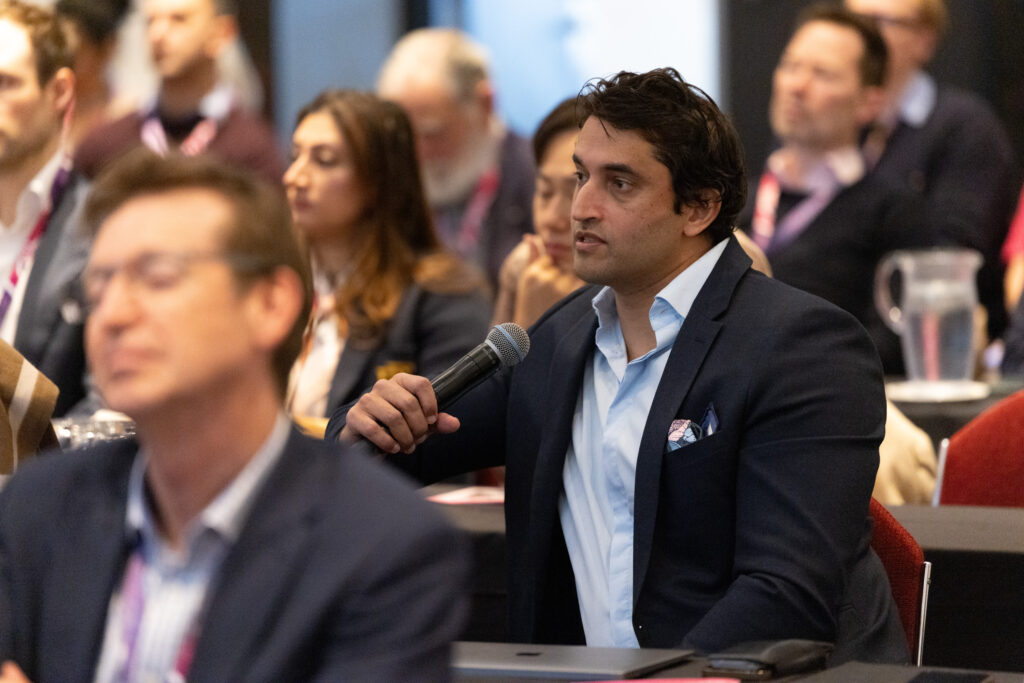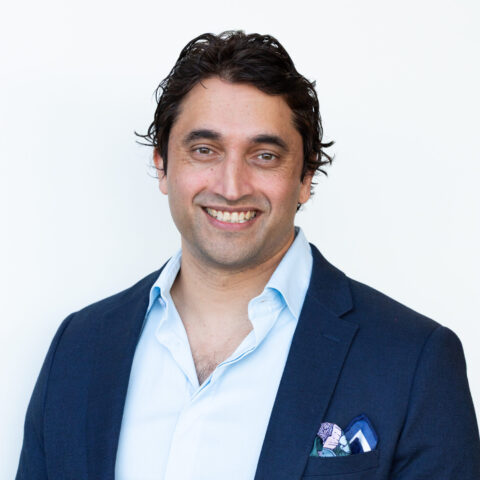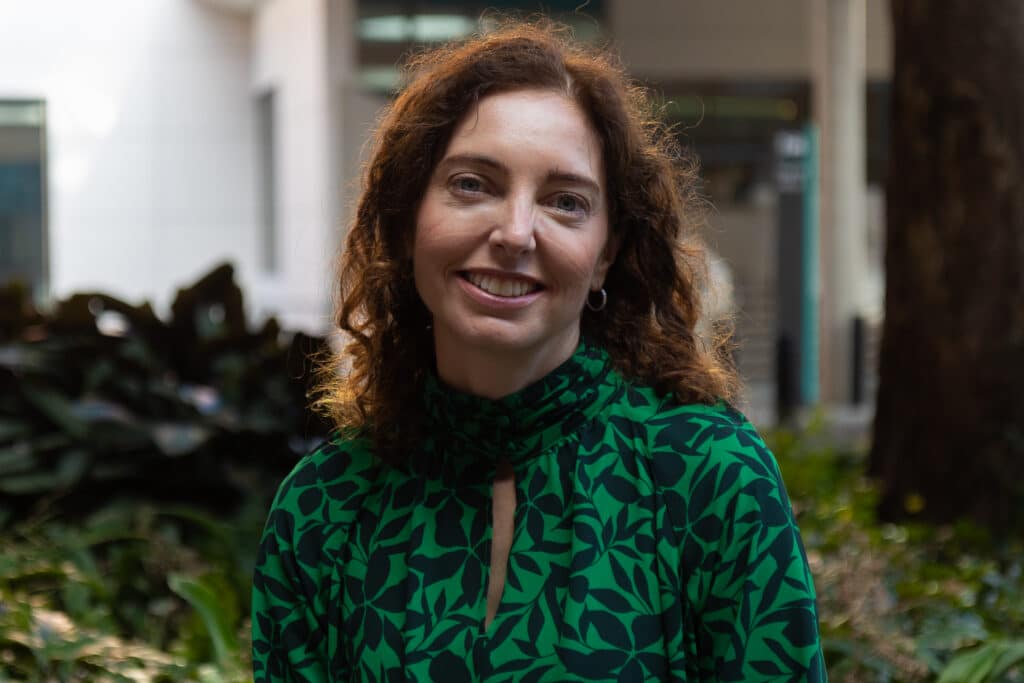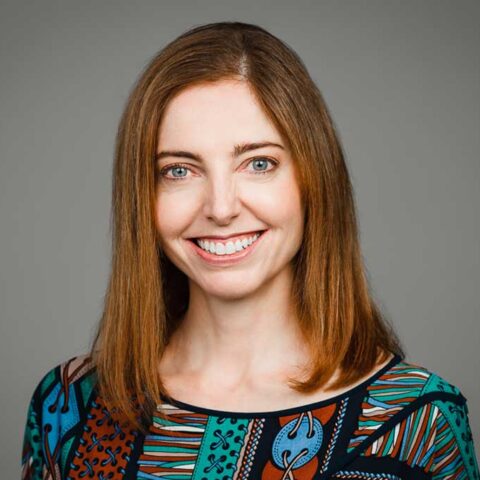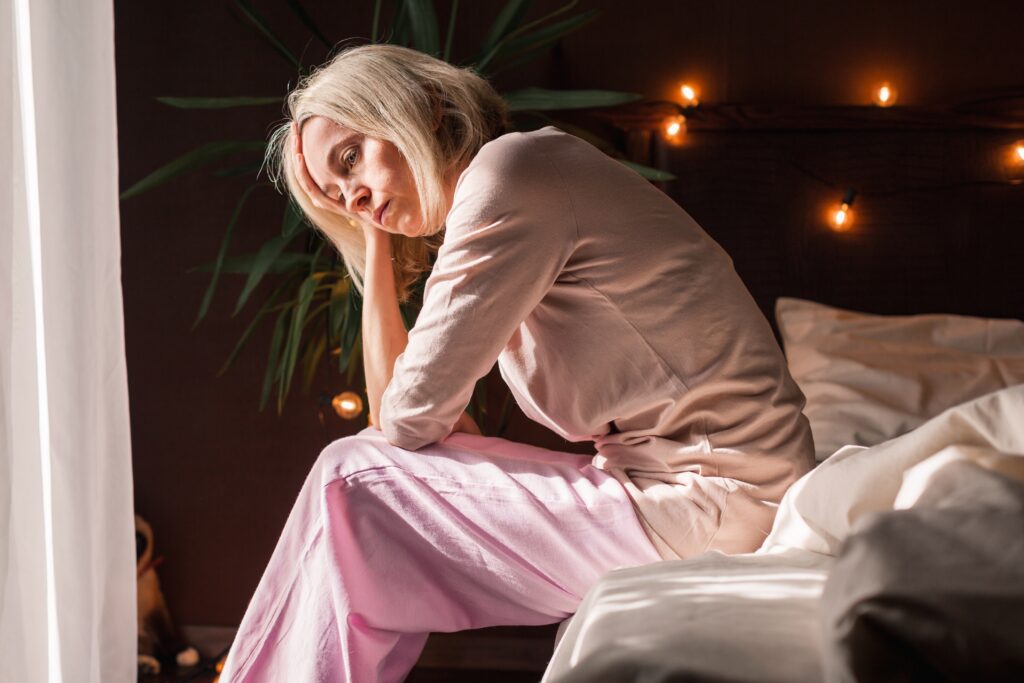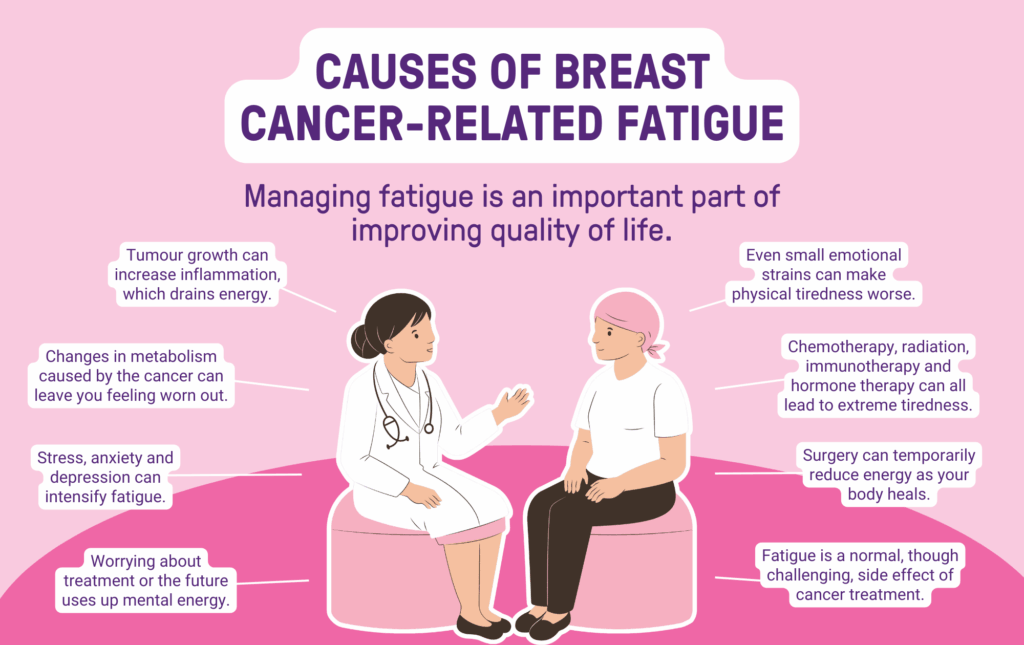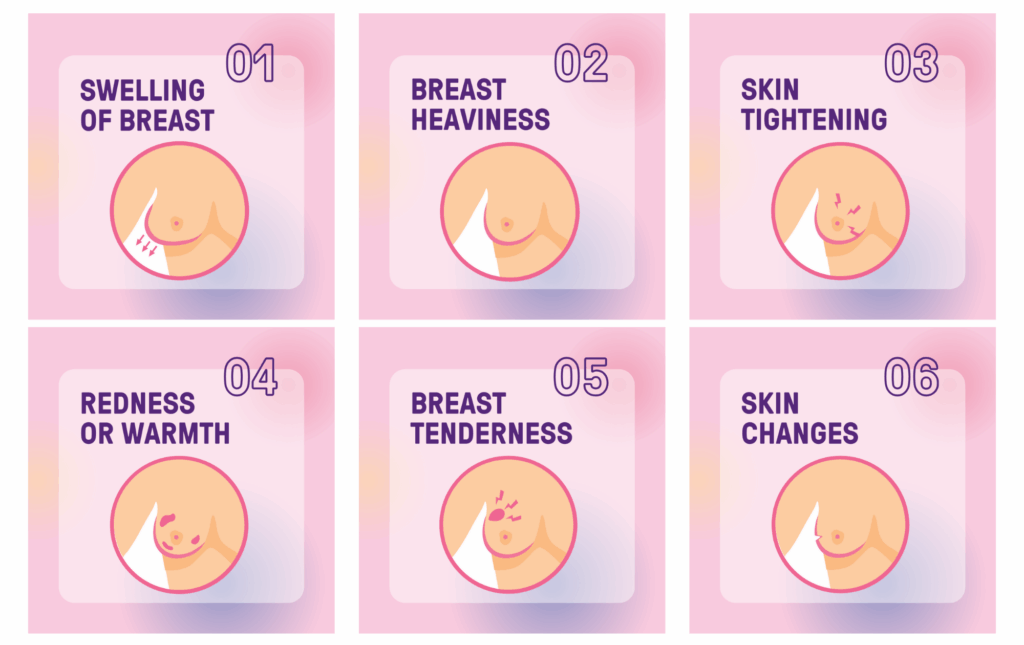Lotjpa Yapaneyepuk (Talk Together): Bridging Communities and Cancer Research
Access to clinical trials isn’t equal. and for Aboriginal and Torres Strait Islander peoples in Regional Victoria, barriers in accessing treatment for breast cancer remain Dr Monica Green and Ms Leah Lindrea-Morrison share an initiative that’s breaking down those barriers by talking together, listening deeply, and creating culturally safe pathways to clinical trials.
“I’m Monica Green, I’m currently the Coordinating Principal Investigator with the Border Medical Oncology Research Unit on a project called, Lotjpa Yapaneyepuk, which means ‘talk together’ in Yorta Yorta language about cancer trials.”
“My name is Leah Lindrea-Morrison, and I’m a Yorta Yorta woman from Shepparton in Victoria. I’m the research assistant for the, Lotjpa Yapaneyepuk Talk Together About Cancer Trials project. So, my role is to lead the community engagement part of the project, including leading the Aboriginal and Advisory groups and also the yarning sessions. And I’m also advised on all aspects of the project.”
“The yarning sessions is a way to find out what community knows about cancer trials and working with them to co design a resource. The information stories shared at the yarning sessions will guide the content and format of the resources that will be developed.”
“I’ve had my own lived experience with breast cancer, and I’ve had a husband who passed with cancer. But also having a young family while my late husband was diagnosed and also having my own diagnosis, I’ve seen first-hand the impact that it has that can have on families”, Leah said.
“Cancer is the leading cause of mortality in Aboriginal and Torres Strait Islander people now, which has only happened in recent years. It’s a major issue, and survival rates are not improving. So, there’s an area of huge need there. And this is evident through the yarning sessions that Leah has been doing as part of the Lotjpa Yapaneyepuk project”, Monica said.
“People are so engaged in it because everyone’s affected by it. There are also low trial participation rates for Aboriginal and Torres Strait Islander people, which is difficult to quantify because it’s not thought that people identify all the time and so it’s difficult to get accurate figures.”
“So, it’s really good to focus on this area of need. And just seeing how engaged the community is, and that includes our community members, but also the staff members of the Aboriginal Community Controlled Health Organisation that we are working with, Rumbalara Aboriginal Cooperative, in Shepparton, and their staff are part of our steering committee and our Aboriginal Advisory Group, which just signifies what a priority it is for the community.”
“Just briefly, I think some of the barriers are the mistrust or fear of research. Obviously in the past, research was done about aboriginal people and so some of those fears are still there. And also, trial design, so the type of cancer being researched, and often there isn’t enough research into the cancers that are common in Aboriginal and Torres Strait Islander people. Strict inclusion criteria and location are other issues. Many clinical trials are coordinated in metropolitan areas, not so much regional,” said Leah.
“I do understand that they are trying to make that happen, but currently taking some Aboriginal people from their community and family has large impacts and can be a huge barrier for people. So, there’s no consideration of cultural aspects of life in the trial designs, implicit or explicit bias. Taking part in a trial may not even be discussed with the person. But also, the language and communication of trial information is something that needs to be addressed.”
“So generally, the information is in a medical (Western) way of talking. So, there’s few Aboriginal and Torres Strait Islander people that, are in the research teams and also that there’s insufficient support for patients there. As well as this the demands or cost or taking part in trials are too much.”
Listen to the podcast
Dr Monica Green and Ms Leah Lindrea-Morrison share an initiative that’s breaking down barriers for Aboriginal and Torres Strait Islander people, by talking together, listening deeply, and creating culturally safe pathways to clinical trials.
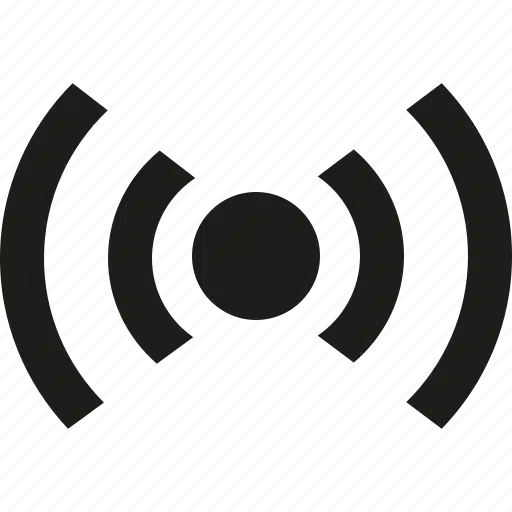
Key takeaways
-
Historical and cultural factors have eroded trust in medical research.
Past unethical and extractive research practices — where Aboriginal participants were studied “about” rather than “with,” and never informed of results — continue to fuel mistrust today. Many Aboriginal and Torres Strait Islander people still associate research and clinical trials with being treated like “Guinea pigs.” True participation requires acknowledgment of this history and active rebuilding of trust through transparency, respect, and reciprocity.
-
Barriers to clinical trial access are systemic and multifaceted.
Participation remains low due to structural inequities — trials are mostly city-based, have restrictive eligibility criteria, and often ignore cultural obligations and language differences. The Western medical system itself can feel culturally unsafe, and logistical barriers such as travel, family responsibilities, and costs further limit access for regional and remote communities.
-
Culturally safe, co-designed initiatives like Lotjpa Yapaneyepuk are key to change.
By “talking together” through yarning sessions, Aboriginal communities in Shepparton are helping co-design trial information and educational resources that reflect their language, stories, and values. This approach builds local ownership, strengthens relationships, and ensures resources are relevant and accessible — creating trust and awareness before patients even face a cancer diagnosis.
-
A more equitable trial system requires reform at every level.
Equity demands collaboration between communities, clinicians, and the broader health system. Clinicians must communicate respectfully and without jargon, while institutions and trial sponsors must redesign studies with flexible inclusion criteria, practical support (e.g. child or elder care), and Aboriginal workforce representation. Culturally safe relationships — not just resources — are what ultimately enable informed, empowered participation in trials.
How do historical, cultural and systemic factors influence trust in medical research and clinical trials among indigenous communities?
“Leah’s talked about the history of medical research and there’s been damaging and disrespectful practices, which you might think are in the past, but actually, it still goes on and it’s really damaging to the trust of Aboriginal people, especially to not get any results from research that they’ve been involved in, and to not hear anything about it,” Monica said.
“Even if the medical team has taken their blood or interviewed them, nothing comes back and that makes you very disinclined to take part in the next research project that comes along. And I think with clinical trials in particular, people might feel like they’re a Guinea Pig, they don’t want to be randomised, there’s a lot of issues around that which need to be discussed in yarning sessions or when people are chatting to their oncologists.”
“From the cultural perspective I’m a non-Aboriginal person and have been working in Aboriginal and Torres Strait Islander health research for 10 years or so, and it’s become very apparent from the people I’m working with and the people that we’ve been researching with. That trust is a huge issue, and also that healthcare for many Aboriginal and Torres Strait Islander people is culturally bound and you can’t ask people to separate their medical condition with their cultural obligations. And health professionals need to be receptive to that and understand and respect it rather than try to change it.”
“From the systemic factors we are working in a largely western medical system, which is often very unfriendly and very culturally unsafe for people even when having the Aboriginal and Torres Strait Islander flags around, or having aboriginal liaison officer available to support people when they come for cancer diagnoses or treatment or participation in a trial. It’s a really important aspect of people engaging with their treatment.”
“From the systemic factors we are working in a largely western medical system, which is often very unfriendly and very culturally unsafe for people even when having the Aboriginal and Torres Strait Islander flags around, or having aboriginal liaison officer available to support people when they come for cancer diagnoses or treatment or participation in a trial. It’s a really important aspect of people engaging with their treatment.”
Can you share any strategies or initiatives that have been effective in improving access or building those stronger relationships with communities in regional Victoria?
“I think it has to be something that the community will benefit from, I think that’s really important. It’s he starting point because it’s no use saying let’s do this, and it’s not something that the community want or need. I think that’s the success of any project, having local knowledge and experience, and having people from that area being part of any research, and having those relationships with your community,” said Leah.
“I just mentioned then with the local mainstream cancer services, it’s important that our community has a voice and that they feel that they’re being heard, to make things more successful. Also, the community based participatory research and co-design, for example, in co-design one of the principles is inclusive partnerships. This means fostering and maintaining equitable and collaborative relationships between all participants. Establishing appropriate communication channels and conflict resolution processes formulated by and with community that retains trust and support authentic partnerships using imperative.”
“And that’s where Monica was talking about trust. If there’s no trust there, then good luck. And lastly, I would say advocacy to make sure Aboriginal and Torres Strait Islander people have access to pharmaceutical trials.”
What role does community engagement and co-design play in creating a more inclusive and culturally safe research opportunity for patients?
“You’ve got a much better chance of reaching your audience if they’ve been involved in creating the content and making it meaningful and relevant. And so that experience when you’re doing co-design of going out to community and hearing from the people who will be recipients of whatever you produce is so valuable,” said Monica.
“It’s not just for the act of receiving that information, but it also creates positive relationships, which is hopefully the aim. It creates awareness of the issue already and people start talking about it. As I said before, everyone’s affected by cancer in some way. Basically, whatever you’re developing will be much stronger and have a greater likelihood of doing what you want it to do.”
“And in, in our case for Lotjpa Yapaneyepuk, we want to create resources about clinical trials that reach Aboriginal and Torres Strait Islander people so that they’re aware of clinical trials and myths are dispelled, such as you’re not going to be a Guinea Pig sort of thing.”
“So that if, and when, people are diagnosed with cancer or they have a family member who’s diagnosed with cancer, they are already equipped with some knowledge about clinical trials. And we want to end up with some videos that people can just watch for two or three minutes to learn what a clinical trial is, in a way that’s understandable.”
How can clinicans and resarchers better support Aboriginal and Torres Strait Islander patients to consider and navigate trial participation?
“First of all, recognising that the relationship between clinicians and Aboriginal and Torres Strait Islander people is a critical aspect of that engagement with treatment. And so, with cancer treatment, it’s often not possible to have developed a strong relationship before treatment or being offered a clinical trial. But the way in which the decision is held is likely to have a significant impact on how the trial information is received,” Leah said.
“And I think it’s that first initial contact if you feel comfortable, that relationship has already started to form. So other strategies include the Aboriginal workforce development, patient navigators or care coordinators as part of the team, telehealth trials, cultural safety and equitable care that help to build trust.”
“Using language that they will understand, no medical jargon. Becoming familiar with the key principles and guidelines for research and practice. So ethical guidelines through the NHMRC code of ethics. And obviously the people that are researchers will understand these acronyms. Another one is utilising a quality appraisal tool. And for health services it’s about following the National Standard, the user-guide of cultural respect from the Department of Health.”
“It’s important to consider, does the person feel respected? Are their questions being answered? Are their responses being respected? But also, I think just knowing that you might have somebody else that you can recontact is valuable.”
What does a more equitable and accessible clinical trials landscape look like, and what needs to happen for us to get there?
“Not having such strict inclusion and exclusion criteria. Looking at ways that the trial managers can support Aboriginal and Torres Strait Islander people to help with their participation. What time of day is best for you for appointment, and why? If you can’t come because you’ve got, you are looking after your grandchild or you’re looking after your parents or something, then can we pay for someone to do that?”
“We need to start looking at other solutions to recognise why people might say, I’m not going to participate because I’ve got other priorities. So, there’s that level at the health system and cancer health professionals, and that’s part of what Lotjpa Yapaneyepuk is doing, by trying to raise awareness of the strategies that might connect Aboriginal and Torres Strait Islander people to the clinical trials.”
“There are other people working in this area as well. Lots of people are approaching it, and our project obviously is focussed on a community level where we’re talking to community members and developing resources as advised by them and our trial experts. But while we are working at community level, we hope what we will develop will be used at a national level and will continue to reach Aboriginal and Torres Strait Islander people outside country.”
“And obviously it doesn’t stop there, there’s a whole range of different avenues to increase awareness and different sorts of resources that could be developed. But I think the key thing is that discussion needs to take place in a culturally safe way. You can develop all the resources you like, but if the offer to take part in a clinical trial isn’t made, or is made in such a way that you alienate the person who you are treating, then that’s not what we want, that’s not a good outcome”, Monica said.
QUICK ACCESS
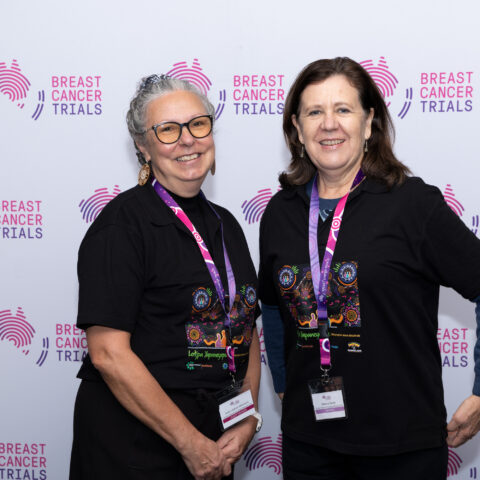
Dr Monica Green (R) and Ms Leah Lindrea-Morrison (L)
Support Breast Cancer Research
Listen Now: Lotjpa Yapaneyepuk (Talk Together): Bridging Communities and Cancer Research
Dr Monica Green and Ms Leah Lindrea-Morrison share an initiative that’s breaking down barriers for Aboriginal and Torres Strait Islander people, by talking together, listening deeply, and creating culturally safe pathways to clinical trials.
Podcast Transcript
-
Lotjpa Yapaneyepuk (Talk Together): Bridging Communities and Cancer Research
Lotjpa Yapaneyepuk (Talk Together): Bridging Communities and Cancer Research
Access to clinical trials isn’t equal. and for Aboriginal and Torres Strait Islander peoples in Regional Victoria, barriers in accessing treatment for breast cancer remain Dr Monica Green and Ms Leah Lindrea-Morrison share an initiative that’s breaking down those barriers by talking together, listening deeply, and creating culturally safe pathways to clinical trials/
“I’m Monica Green, I’m currently the Coordinating Principal Investigator with the Border Medical Oncology Research Unit on a project called, Lotjpa Yapaneyepuk, which means ‘talk together’ in Yorta Yorta language about cancer trials.”
“My name is Leah Lindrea-Morrison, and I’m a Yorta Yorta woman from Shepparton in Victoria. I’m the research assistant for the, Lotjpa Yapaneyepuk Talk Together About Cancer Trials project. So, my role is to lead the community engagement part of the project, including leading the Aboriginal and Advisory groups and also the yarning sessions. And I’m also advised on all aspects of the project.”
“The yarning sessions is a way to find out what community knows about cancer trials and working with them to co design a resource. The information stories shared at the yarning sessions will guide the content and format of the resources that will be developed.”
“I’ve had my own lived experience with breast cancer, and I’ve had a husband who passed with cancer. But also having a young family while my late husband was diagnosed and also having my own diagnosis, I’ve seen first-hand the impact that it has that can have on families”, Leah said.
“Cancer is the leading cause of mortality in Aboriginal and Torres Strait Islander people now, which has only happened in recent years. It’s a major issue, and survival rates are not improving. So, there’s an area of huge need there. And this is evident through the yarning sessions that Leah has been doing as part of the Lotjpa Yapaneyepuk project”, Monica said.
“People are so engaged in it because everyone’s affected by it. There are also low trial participation rates for Aboriginal and Torres Strait Islander people, which is difficult to quantify because it’s not thought that people identify all the time and so it’s difficult to get accurate figures.”
“So, it’s really good to focus on this area of need. And just seeing how engaged the community is, and that includes our community members, but also the staff members of the Aboriginal Community Controlled Health Organisation that we are working with, Rumbalara Aboriginal Cooperative, in Shepparton, and their staff are part of our steering committee and our Aboriginal Advisory Group, which just signifies what a priority it is for the community.”
“Just briefly, I think some of the barriers are the mistrust or fear of research. Obviously in the past, research was done about aboriginal people and so some of those fears are still there. And also, trial design, so the type of cancer being researched, and often there isn’t enough research into the cancers that are common in Aboriginal and Torres Strait Islander people. Strict inclusion criteria and location are other issues. Many clinical trials are coordinated in metropolitan areas, not so much regional,” said Leah.
“I do understand that they are trying to make that happen, but currently taking some Aboriginal people from their community and family has large impacts and can be a huge barrier for people. So, there’s no consideration of cultural aspects of life in the trial designs, implicit or explicit bias. Taking part in a trial may not even be discussed with the person. But also, the language and communication of trial information is something that needs to be addressed.”
“So generally, the information is in a medical (Western) way of talking. So, there’s few Aboriginal and Torres Strait Islander people that, are in the research teams and also that there’s insufficient support for patients there. As well as this the demands or cost or taking part in trials are too much.”
How do historical, cultural and systemic factors influence trust in medical research and clinical trials among indigenous communities?
“Leah’s talked about the history of medical research and there’s been damaging and disrespectful practices, which you might think are in the past, but actually, it still goes on and it’s really damaging to the trust of Aboriginal people, especially to not get any results from research that they’ve been involved in, and to not hear anything about it,” Monica said.
“Even if the medical team has taken their blood or interviewed them, nothing comes back and that makes you very disinclined to take part in the next research project that comes along. And I think with clinical trials in particular, people might feel like they’re a Guinea Pig, they don’t want to be randomised, there’s a lot of issues around that which need to be discussed in yarning sessions or when people are chatting to their oncologists.”
“From the cultural perspective I’m a non-Aboriginal person and have been working in Aboriginal and Torres Strait Islander health research for 10 years or so, and it’s become very apparent from the people I’m working with and the people that we’ve been researching with. That trust is a huge issue, and also that healthcare for many Aboriginal and Torres Strait Islander people is culturally bound and you can’t ask people to separate their medical condition with their cultural obligations. And health professionals need to be receptive to that and understand and respect it rather than try to change it.”
“From the systemic factors we are working in a largely western medical system, which is often very unfriendly and very culturally unsafe for people even when having the Aboriginal and Torres Strait Islander flags around, or having aboriginal liaison officer available to support people when they come for cancer diagnoses or treatment or participation in a trial. It’s a really important aspect of people engaging with their treatment.”
Can you share any strategies or initiatives that have been effective in improving access or building those stronger relationships with communities in regional Victoria?
“I think it has to be something that the community will benefit from, I think that’s really important. It’s he starting point because it’s no use saying let’s do this, and it’s not something that the community want or need. I think that’s the success of any project, having local knowledge and experience, and having people from that area being part of any research, and having those relationships with your community,” said Leah.
“I just mentioned then with the local mainstream cancer services, it’s important that our community has a voice and that they feel that they’re being heard, to make things more successful. Also, the community based participatory research and co-design, for example, in co-design one of the principles is inclusive partnerships. This means fostering and maintaining equitable and collaborative relationships between all participants. Establishing appropriate communication channels and conflict resolution processes formulated by and with community that retains trust and support authentic partnerships using imperative.”
“And that’s where Monica was talking about trust. If there’s no trust there, then good luck. And lastly, I would say advocacy to make sure Aboriginal and Torres Strait Islander people have access to pharmaceutical trials.”
What role does community engagement and co-design play in creating a more inclusive and culturally safe research opportunity for patients?
“You’ve got a much better chance of reaching your audience if they’ve been involved in creating the content and making it meaningful and relevant. And so that experience when you’re doing co-design of going out to community and hearing from the people who will be recipients of whatever you produce is so valuable,” said Monica.
“It’s not just for the act of receiving that information, but it also creates positive relationships, which is hopefully the aim. It creates awareness of the issue already and people start talking about it. As I said before, everyone’s affected by cancer in some way. Basically, whatever you’re developing will be much stronger and have a greater likelihood of doing what you want it to do.”
“And in, in our case for Lotjpa Yapaneyepuk, we want to create resources about clinical trials that reach Aboriginal and Torres Strait Islander people so that they’re aware of clinical trials and myths are dispelled, such as you’re not going to be a Guinea Pig sort of thing.”
“So that if, and when, people are diagnosed with cancer or they have a family member who’s diagnosed with cancer, they are already equipped with some knowledge about clinical trials. And we want to end up with some videos that people can just watch for two or three minutes to learn what a clinical trial is, in a way that’s understandable.”
How can clinicians and researchers better support Aboriginal and Torres Strait Islander patients to consider and navigate trial participation?
“First of all, recognising that the relationship between clinicians and Aboriginal and Torres Strait Islander people is a critical aspect of that engagement with treatment. And so, with cancer treatment, it’s often not possible to have developed a strong relationship before treatment or being offered a clinical trial. But the way in which the decision is held is likely to have a significant impact on how the trial information is received,” Leah said.
“For example, does the person feel respected? Are their questions being answered? Are their responses being respected? But also, I think that you get all this information just knowing that you might have somebody else that you can recontact.”
“And I think it’s that first initial contact if you feel comfortable, that relationship has already started to form. So other strategies include the Aboriginal workforce development, patient navigators or care coordinators as part of the team, telehealth trials, cultural safety and equitable care that help to build trust.”
“Using language that they will understand, no medical jargon. Becoming familiar with the key principles and guidelines for research and practice. So ethical guidelines through the NHMRC code of ethics. And obviously the people that are researchers will understand these acronyms. Another one is utilising a quality appraisal tool. And for health services it’s about following the National Standard, the user-guide of cultural respect from the Department of Health.”
What does a more equitable and accessible clinical trials landscape look like and what needs to happen for us to get there?
“The big picture aims to improve cancer outcomes, and one way of doing that is by increasing participation in cancer clinical trials. And to get there, it’s multifaceted and needs to be approached from every level of the health system. And that’s from pharmaceutical companies. Developing trial designs that are not so restrictive”, said Monica.
“Not having such strict inclusion and exclusion criteria. Looking at ways that the trial managers can support Aboriginal and Torres Strait Islander people to help with their participation. What time of day is best for you for appointment, and why? If you can’t come because you’ve got, you are looking after your grandchild or you’re looking after your parents or something, then can we pay for someone to do that?”
“We need to start looking at other solutions to recognise why people might say, I’m not going to participate because I’ve got other priorities. So, there’s that level at the health system and cancer health professionals, and that’s part of what Lotjpa Yapaneyepuk is doing, by trying to raise awareness of the strategies that might connect Aboriginal and Torres Strait Islander people to the clinical trials.”
“There are other people working in this area as well. Lots of people are approaching it, and our project obviously is focussed on a community level where we’re talking to community members and developing resources as advised by them and our trial experts. But while we are working at community level, we hope what we will develop will be used at a national level and will continue to reach Aboriginal and Torres Strait Islander people outside country.”
“And obviously it doesn’t stop there, there’s a whole range of different avenues to increase awareness and different sorts of resources that could be developed. But I think the key thing is that discussion needs to take place in a culturally safe way. You can develop all the resources you like, but if the offer to take part in a clinical trial isn’t made, or is made in such a way that you alienate the person who you are treating, then that’s not what we want, that’s not a good outcome”, Monica said.
